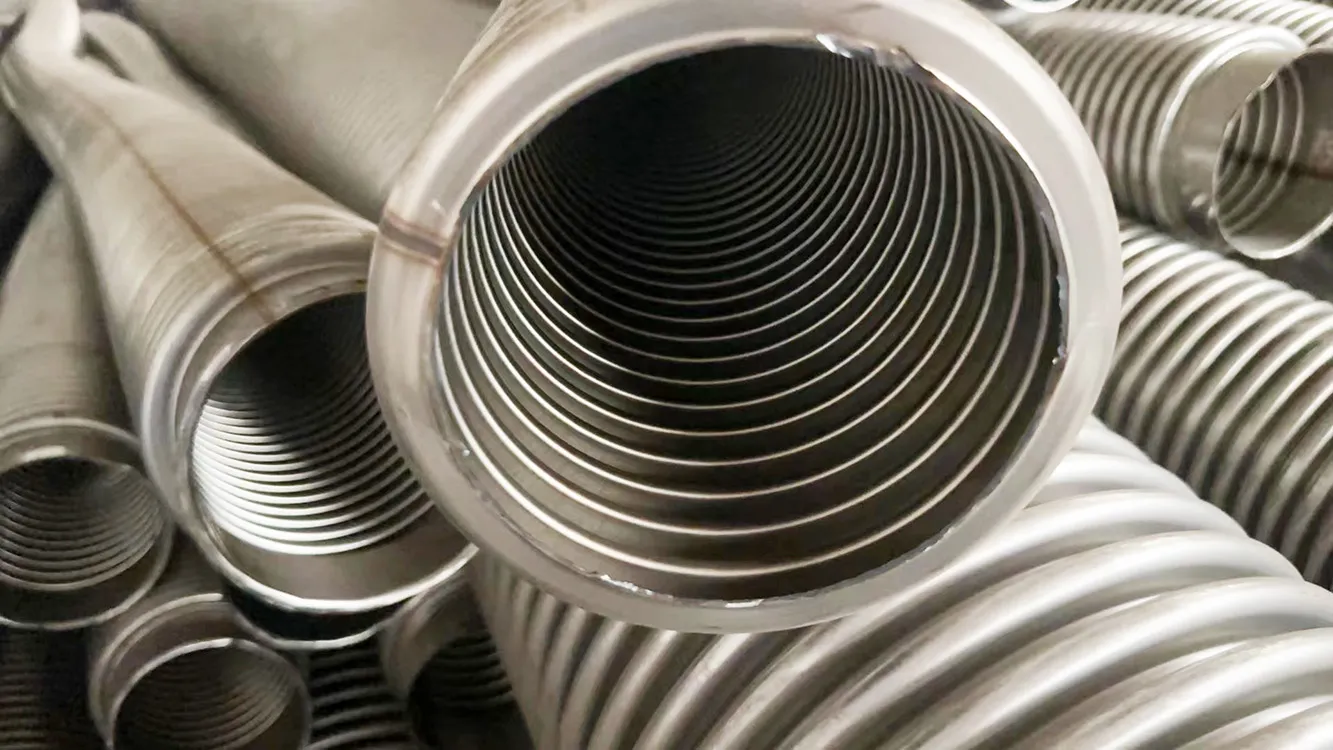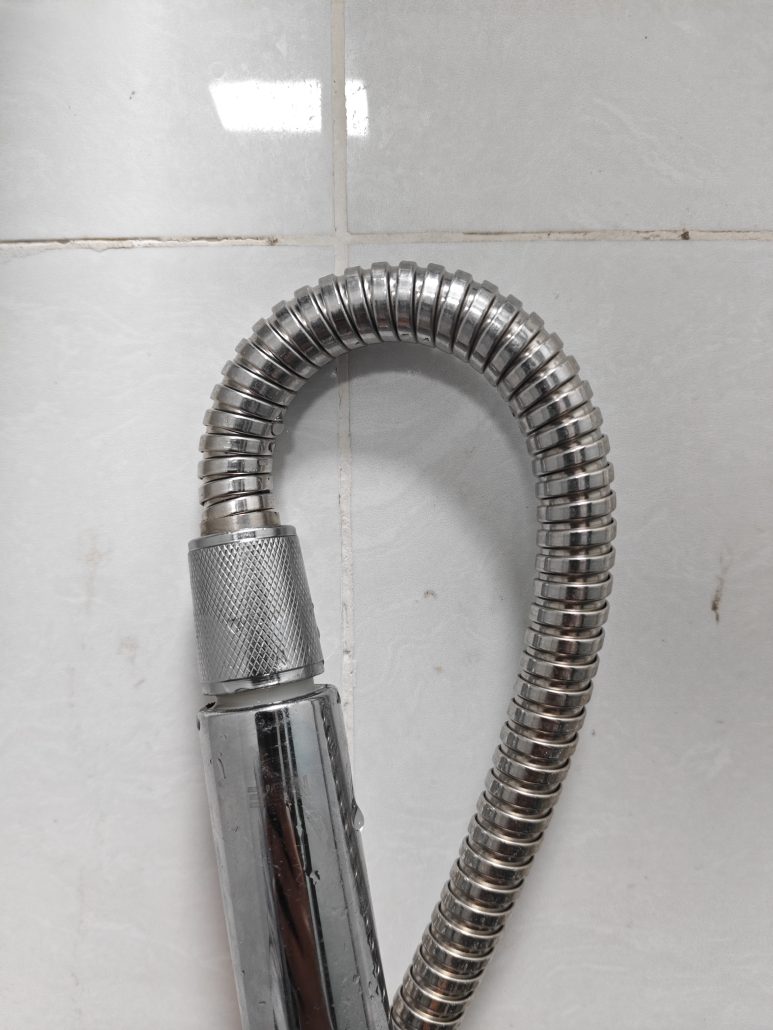Flexible hoses have a wide range of uses in various industries. They are known for their versatility and ease of use. Generally, people use rubbers and thermoplastics to make them. However, these materials are not good enough if you need more durability. In those cases, you must opt for durable materials, like metals. Flex stainless steel hoses are among the most used flexible hoses in the hose industry.
This article introduces flex (flexible) stainless steel hoses and their types and fittings. We hope it helps you choose the correct ones for your project.
What Are Flex (Flexible) Stainless Steel Hoses and Hose Fittings?
Flex (flexible) stainless steel hoses are made of metal, specifically stainless steel. They are strong, bendable, and excellent at resisting heat and rust. Because of this, they are perfect for moving gases or liquids in harsh conditions.
You might wonder how metal hoses can be flexible. You are right. If you use general extrusion or casting methods, metal pipes become rigid, and you can’t bend them. To make them flexible, you must change their structure and design. Therefore, engineers devised solutions, such as corrugated and interlocking forms.

On the other hand, hose fittings are what connect lines to pumps or other equipment. They are made of stainless steel, just like flex-stainless steel tubes. They are very important for making it safe and don’t leak links. Also, hose fittings usually come in three styles: threaded, flanged, and quick-connect.
People use stainless steel flexible hoses in many industries. Whatever the industry is, they are the same, transferring liquids or gases. Power plants, cooling systems, and chemical industries are typical applications. You will also find their use in construction and even in cars, airplanes, and marine vessels.
Types of Flex (Flexible) Stainless Steel Hoses: Construction and Design
There is a wide range of stainless steel flexible hoses available. Choosing the correct type from this list can be tricky. To make it easier, you can categorize them into several groups. You can generally find three primary groups based on design, application, and fittings. Consecutively, based on construction and design, there are two main types of flex stainless steel hoses.
Type #1 Corrugated Stainless Steel Hoses
Corrugated stainless steel hoses are among the most common flex metal hoses. They are only flexible when they are made in a unique structure. The part of their name, “corrugated,” mainly comes from their corrugation structure. They are commonly used to convey liquids and gases. Because they are made of metal, they can handle very high pressure.
The structure of these hoses includes a series of ridges or corrugations along their ridges. This corrugation structure typically allows flex SS hoses to bend without breaking. However, the braid of the hose also protects it from external damage.
Corrugated flexible stainless steel hoses are prevalent in various industries. Food industries use them in steam cleaning systems. In construction, people prefer flex stainless steel hoses to carry natural gas. Chemical plants widely use them to move corrosive chemicals. These hoses are also used in automotive and marine vehicles.
Even corrugated stainless steel hoses come with varying corrugation patterns. Therefore, choosing the correct corrugated flexible hoses might be tricky. Generally, there are two significant types of corrugation patterns.
Helical Stainless Steel Hoses
These flexible stainless steel hoses have helical spiral corrugated patterns, hence their name. They are ideal for applications involving rotational movement. For example, they connect pumps and agitators in chemical plants. They are also used in CNC machines to supply cooling liquids and in marine vessels for fuel transfer.
Annular Stainless Steel Hoses
These flexible stainless steel hoses have perpendicular corrugated patterns. The circular corrugation is also called annular corrugation. These hoses provide excellent flexibility. Because of this, the hoses face less twisting or kinking. They often come with added reinforcement.
Annular stainless steel hoses are widely used in HVAC and water supply lines. They can also deliver fuel or coolant to vehicles and ships.
Type #2 Interlock Stainless Steel Hoses
These flexible stainless steel hoses have interlocking metal strips. They are not spiral-like corrugated hoses. Thus, they can not offer high flexibility but provide high durability. They are excellent against abrasion and mechanical stress.
Interlock stainless steel hoses are widely used in industrial vacuum systems. Here, People mainly use them to remove dust and debris. These hoses are also popular for cable protection. Moreover, people widely use them to handle exhaust gases in industrial ovens.
Types of Flexible Stainless Steel Hoses: Application
Flex stainless steel hoses also differ based on applications. People in different countries widely recognize them in three main types.
Type #1 Pressure Hoses
As the name suggests, pressure hoses are built to handle high-pressure fluids or gases. These flex stainless steel hoses are widely prevalent in heavy-duty applications.
Pressure hoses are typically made with corrugated stainless steel. Some types may also come with one or more layers of stainless steel braiding. This added braiding structure generally improves the ability to endure high pressure.
People widely use pressure stainless steel hoses in hydraulic systems. You can find them in excavators, delivering hydraulic fluids. You may also find their uses in power plants and fire safety applications.
Type #2 Vacuum Hoses
Vacuum stainless steel hoses, on the other hand, are built to handle negative pressure or vacuum conditions. Their main job is not to collapse but to maintain a smooth fluid flow.
Vacuum flex stainless steel hoses are usually corrugated. Like pressure hoses, they may have braiding layers to maintain their structure. This unique structure ensures resistance to external compression.
Vacuum hoses are widely used in vacuum cleaners, laboratory systems, and packaging machines.
Type #3 Flexible Exhaust Hoses
As the name implies, these hoses are specially designed to carry exhaust gases. You will often find its use in engines or industrial systems. Indeed, they can endure high temperatures and corrosive gases.
These hoses are made of corrugated stainless steel, which makes them flexible and heat resistant. Their design often includes an outer layer for extra insulation or abrasion resistance.

Types of Flexible Stainless Steel Hoses: Fittings and End Connections
Flexible stainless steel hoses also come with different end fittings. The types and functions of these fittings generally depend on specific systems. However, the main job of these fittings is to connect the hoses to other equipment. In this case, you must choose the right type to ensure a secure and leak-proof connection.
Type #1 Hoses with Straight Ends
Hoses with straight ends typically have simple, plain ends. They do not come with any threads or special features. The ends are smooth and straight. People often weld or clamp it onto equipment or pipes.
Flex stainless steel hoses with straight ends are widely prevalent in welding connections. In this case, they play a significant role in conveying oxygen or argon. Also, you can use them on high-pressure lines. Sometimes, you may also find their uses in industrial cooling systems.
Type #2 Threaded Connections
Threaded connections, on the other hand, have threads on the ends of the hose. These threads allow the hose to screw into matching fittings. These threads usually have standard sizes. You might be familiar with NPT (National Pipe Thread) and BSP (British Standard Pipe Standard). Both of these standards are widely prevalent in many countries. However, they provide a tight seal when screwed into place.
Threaded and flexible stainless steel hoses are prevalent when tight sealing is crucial. They do great in gas, water supply lines, and boiler systems.

Type #3 Flanged Connections
Flange connections use flat and round flanges at the hose ends. These flanges are bolted to match the flanges on stainless steel hoses. The fittings must be stainless steel to match the hose material. When installing, you must place the gaskets between the flanges to prevent leaks. These flexible stainless steel hoses are popular in chemical plants, power plants, and the food industry.
Type #4 Quick Connect Couplings
As the name implies, these flexible stainless steel hoses can quickly connect. You don’t need any tools to do this. They are easy to connect and very fast. The fittings usually have two main parts: male and female. They snap together securely and create a tight connection. These fittings often come with a locking mechanism.
Quick-connect couplings are widely prevalent in hydraulic systems. They connect hoses with pumps and equipment. They are also popular in pressure washers and agricultural and natural equipment.
Why Should You Use Flex Stainless Steel Hoses?
For various reasons, you should use stainless steel flex hoses over regular flex hoses. Some of the main reasons are:
(1) Flex stainless steel hoses offer the most durable solution.
(2) They are corrosion-resistant and don’t need much upkeep.
(3) Since stainless steel flex hoses can be bent, you can install them in tight spaces.
(4) Stainless steel has a very high melting point. Therefore, flex stainless steel hoses can handle high and low temperatures. This ability makes these hoses worthwhile in power plants and cryogenics.
(5) Stainless steel has food grades. Therefore, you can use these hoses in the food industry.
Contact Us Today!
If you have any questions regarding flexible hoses, don’t hesitate to contact us. You can also navigate to your flexible hoses and learn more about their sizes and applications. We always welcome all types of questions from our visitors.
